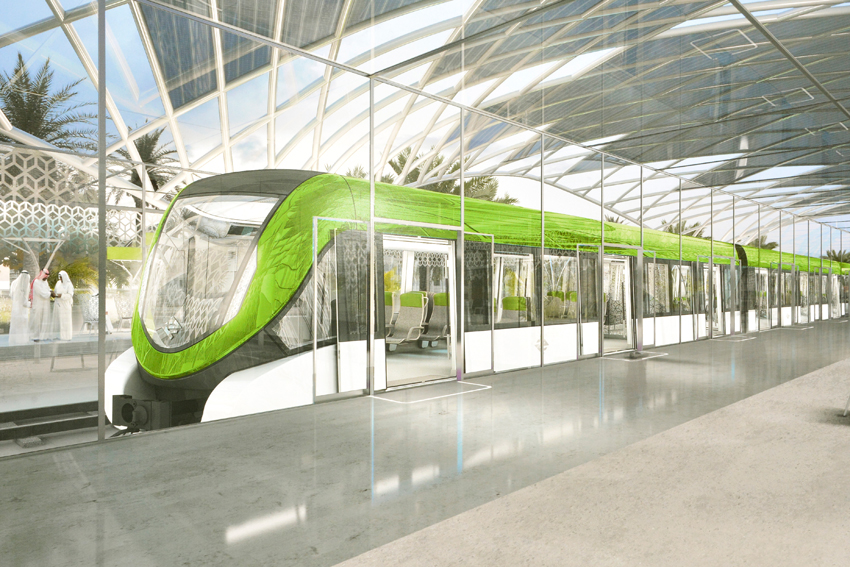Described by officials as the largest public transport system currently under development in the world, the $23 billion Riyadh Metro project is on track to be completed by the end of 2018, earlier than its scheduled 2019 launch date, and is set to change everyday life in the Saudi capital.

Despite the government’s reductions on spending last year, which has slowed or suspended work on some of its projects, Riyadh Metro has remained unaffected. According to Alwalid Alekrish, Director of Construction Development Projects and Project Director of the Riyadh Metro at the Arriyadh Development Authority (ADA), the metro is being paid for directly from ring-fenced state funds – a clear sign of its importance to the government and the impact it will have – and therefore has no specific debt or borrowing conditions to impact on its construction.
In mid-2013, multibillion-dollar construction contracts were awarded to three consortiums: ‘BACS’ headed by construction giant Bechtel Corp of the US, ‘FAST’ lead by Fomento de Construcciones y Contratas of Spain, and Italy's Ansaldo STS the ‘ANM’ group.
Construction started in April 2014 and tunneling for Line 1 began in July 2015. Around 31,000 workers are involved in the metro’s construction; it will then be the source of employment for an estimated 7,000 people when it enters operation.
“Most of the metro systems in European cities have ‘grown with the cities. In London the system is over 150 years old; Paris is just a bit younger; they all grew gradually. But here, within five years, the change will be like a shock, a good shock. People all of the sudden will find it easier to move around the city,” comments Mr Alekrish.
Driverless two-car trains using the latest computer-based train control (CBTC) technology will criss-cross the capital on 176km of tracks, stopping at 85 stations. The longest of the network’s six lines, Line 3 (Orange), is almost 41km (25 miles) long, running in an east-west direction along Al Madinah Al Munawwarah and Prince Saad Bin Abdulrahman Al Awal roads.
The metro will be able to handle some 3.2 million passengers a day – close to the 402km London Underground’s 3.5 million daily average – and will integrate with a 1,150km bus network supported by a fleet of new buses. Together, along with other transport services in the city, they form the Riyadh Public Transport Project (RPTP), which has been designed to meet the demands of the capital’s growing population (expected to rise from 5.7 million today to 8.3 million in 2030), reduce traffic congestion, and improve air quality.
“There is no doubt in my mind that the people of Riyadh will have a better city in the future as a direct result of increased mobility and the new economic opportunities that the metro will bring,” says Mr Alekrish.
In assessing the impact the metro’s construction would have, ADA carried out extensive public relations and consultations with the people in the areas facing disruption to daily services, coordinating with the utility companies and involving the public as much as possible. And it is ensuring all 85 stations meet the requirements for LEED (Leadership in Energy and Environmental Design) Silver Certification as part of its environmental protection policy.
ADA selected four stations as being of particular importance and designated them ‘iconic’ in terms of size and appearance. The designs of the four standout stations were put out to international tenders, with the renowned Iraqi-British architect Zaha Hadid featuring among the winners.
“The general architecture and quality of these buildings will be an attraction in itself,” says Mr Alekrish. “Not only that, we are also developing the surrounding areas of the stations; we don’t just focus on the building, we look at the environment as well – that’s the way ADA works.
“It is not just building the stations, but making sure the roads along the corridor are improved to allow people easy access to the stations, to make walking enjoyable, appealing, safe during the day and night. It will also include the development of commercial, residential and public spaces around the metro stations. The whole project is about transforming the city, not just about constructing the metro.
“Our kids will have a more fun city perhaps to live in, and internationally people will realize more about the fact that Saudi Arabia is a modern and welcoming place.”
0 COMMENTS